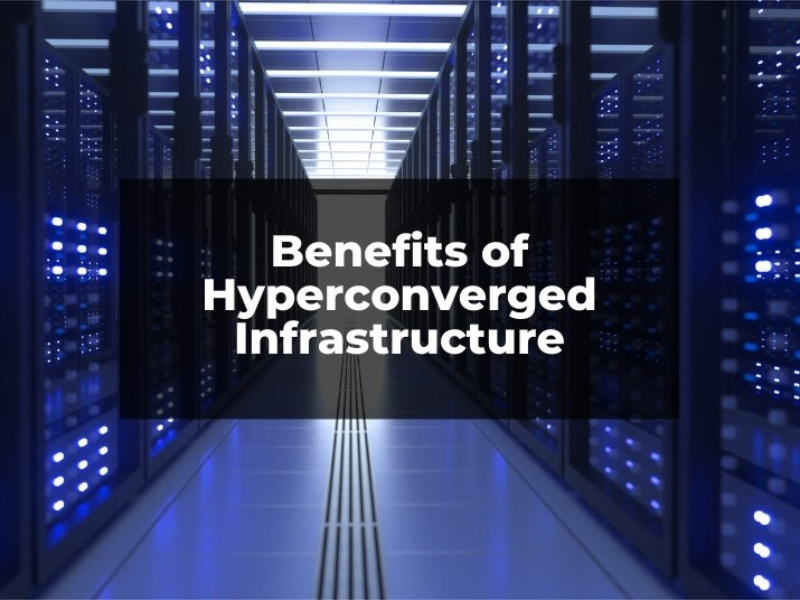- HCI is a modern IT architecture that integrates compute, storage, networking, and virtualisation resources into a single system.
- With the increasing adoption of cloud technologies and the need for more agile IT infrastructures, HCI is well-positioned to meet these demands.
In the rapidly evolving world of technology, the demand for efficient, scalable, and cost-effective data centre solutions is at an all-time high. This is where hyperconverged infrastructure (HCI) comes into play, offering a game-changing approach to managing IT resources. But what exactly is HCI, and why is it so important? Let’s delve into the world of hyperconvergence to find out.
Understanding hyperconverged infrastructure
Hyperconverged infrastructure is a modern IT architecture that integrates compute, storage, networking, and virtualisation resources into a single system. This integration is achieved through software-defined technologies, which allow for greater flexibility and efficiency in managing IT operations. Unlike traditional data centre setups, where these components are managed separately, HCI consolidates them into a unified platform.
The importance of HCI
Here are the importance and benefits of hyperconverged infrastructure:
- Simplified deployment: one of the main reasons organisations are turning to HCI is its ease of deployment. From purchasing systems to setting up virtual workloads, the entire process is made simple and decision makers don’t have to spend a lot of time researching products to ensure compatibility.
- Lower total cost of ownership: For smaller configurations (e.g., up to 5-10 VMs), HCI offers better total cost of ownership because there is no need to purchase multiple additional storage nodes.
- Unified management: HCI uses software-defined compute, storage and network resources, allowing these resources to be managed through a single, unified interface, resulting in increased efficiency.
- Improved IT efficiency: HCI simplifies resource allocation and management compared to traditional infrastructure, enabling IT teams to operate and optimise systems more efficiently.
- Support for next-generation technologies: HCI can support emerging technologies such as the Internet of Things (IoT), Artificial Intelligence (AI), Machine Learning (ML), and Big Data to meet the growing business needs of organisations.
- Flexibility and scalability: By distributing storage controller functionality across infrastructure nodes as a software service, HCI provides greater flexibility and scalability.
- Reduced complexity: Compared to traditional centralised storage and standalone servers, HCI replaces complex traditional infrastructure by creating flexible building blocks through intelligent software.
- Improved performance and stability: HCI combines distributed storage and locally attached storage devices to not only improve performance but also enhance system stability.
- Space and cost savings: Thanks to distributed storage software, HCI eliminates the need for dedicated storage nodes while reducing data centre space footprint and associated costs.
- Better O&M experience: Once the system is deployed, maintaining and optimising the HCI deployment also becomes easier, with automated software that greatly reduces the burden of day-to-day management work on IT professionals.
Also read: Highlights from the Intelligent Infrastructure Conference
Challenges
HCI is difficult to implement and manage, and organisations may need to have some expertise or attend further training to deal with it effectively.
Challenges vary across industries. For example, applications in industries such as finance, manufacturing, and healthcare may encounter a variety of scenarios, including specific virtualisation requirements, enterprise production applications, R&D testing, and disaster recovery.
Although HCI can simplify management and reduce costs, the initial investment is large and users need to evaluate its long-term economic benefits.
During actual operation, performance bottlenecks or system instability may occur, which need to be resolved through continuous optimisation and monitoring.
With the increase in data volume, how to ensure data security and privacy protection becomes a major challenge.
There may be compatibility issues between hardware and software products from different vendors, affecting the stability and scalability of the overall system.
Also read: Microsoft commits to building cloud and AI infrastructure in Thailand
Solution
- Organisations should provide comprehensive professional knowledge training and seek technical support from vendors to ensure the team is proficient in HCI operation and maintenance.
- Select the right hyperconverged solution based on the specific needs of different industries, such as customised solutions for the financial, manufacturing and healthcare industries.
- Conduct detailed cost-benefit analyses to assess the economic returns of HCI in long-term use, so as to make reasonable investment decisions.
- Through real-time monitoring and regular optimisation, identify and resolve system performance bottlenecks and stability issues in a timely manner to ensure efficient system operation.
- Introducing advanced data encryption technology and access control mechanisms to ensure the security and privacy of data during transmission and storage.
- Use a unified management platform to achieve end-to-end management of all modules within the hyper-converged architecture, improving management efficiency and reducing the error rate.
The future of HCI
As technology continues to advance, the role of HCI is expected to grow. With the increasing adoption of cloud technologies and the need for more agile IT infrastructures, HCI is well-positioned to meet these demands. The future looks bright for hyperconverged infrastructure as it continues to evolve and offer new possibilities for businesses.
Hyperconverged infrastructure is an essential component of modern IT strategies. Its ability to simplify management, enhance scalability, and improve cost-effectiveness makes it a compelling choice for businesses looking to future-proof their IT operations. As we move forward, the importance of HCI is only set to increase, making it a key area of focus for technology professionals.

